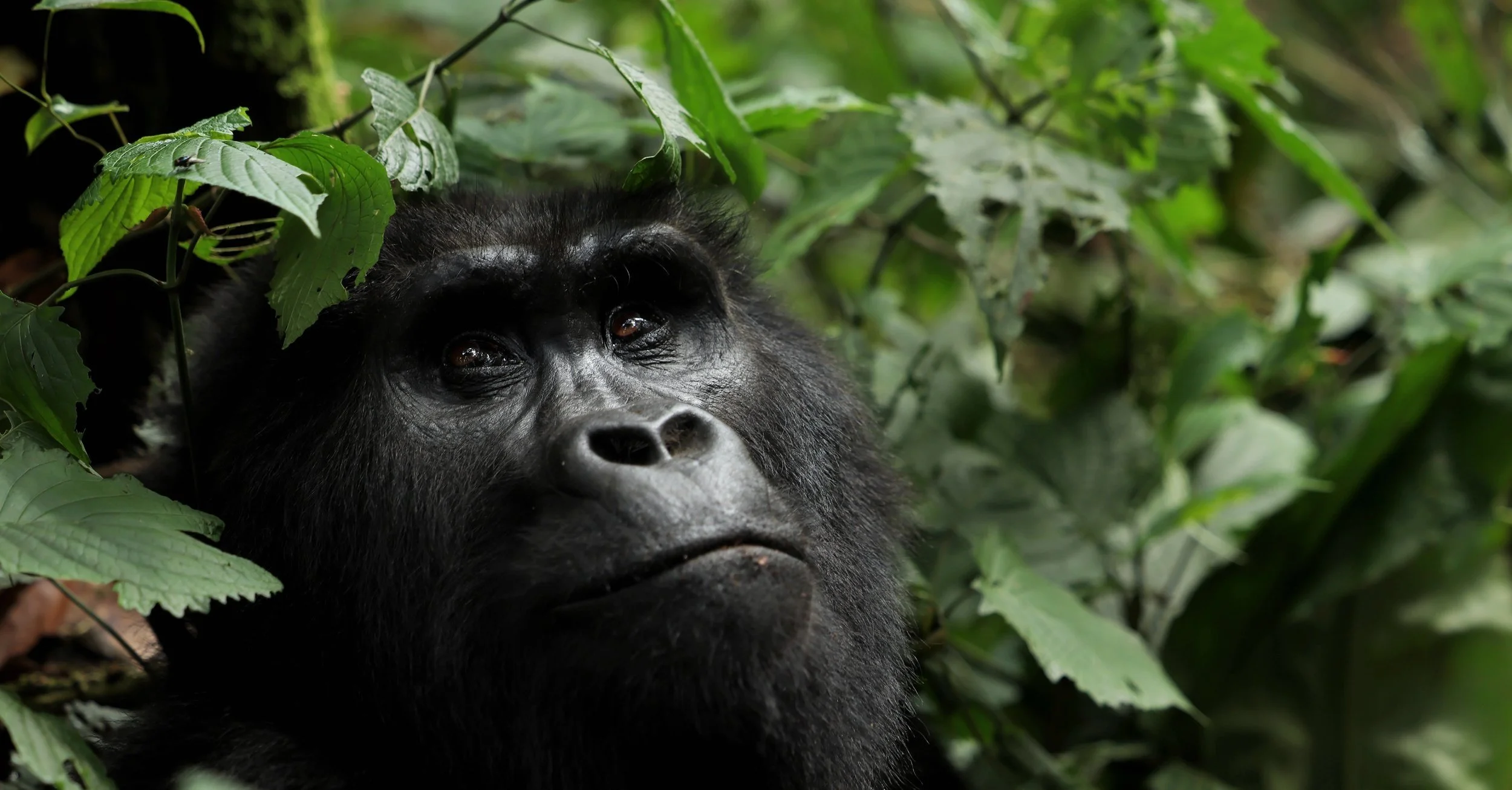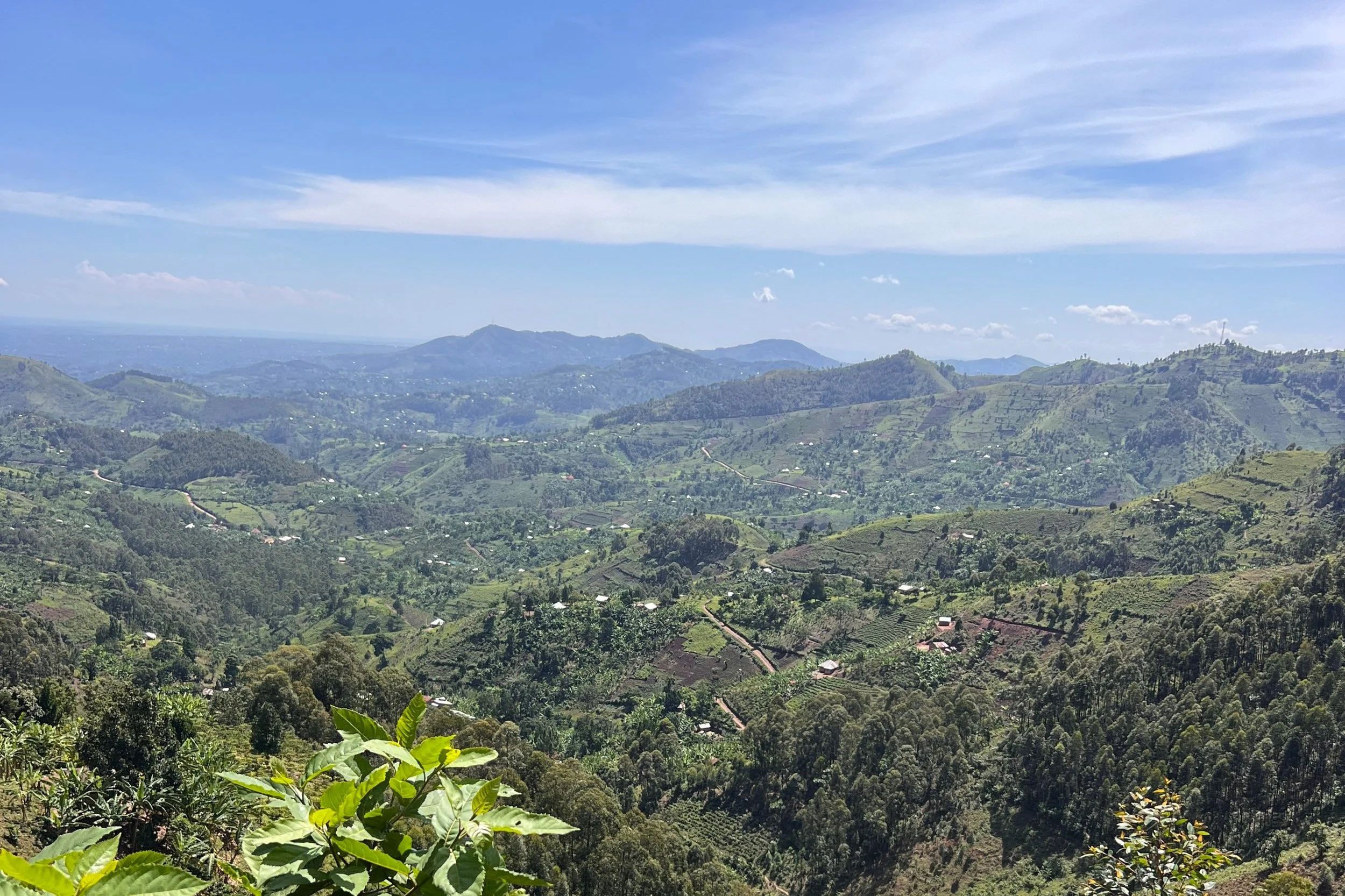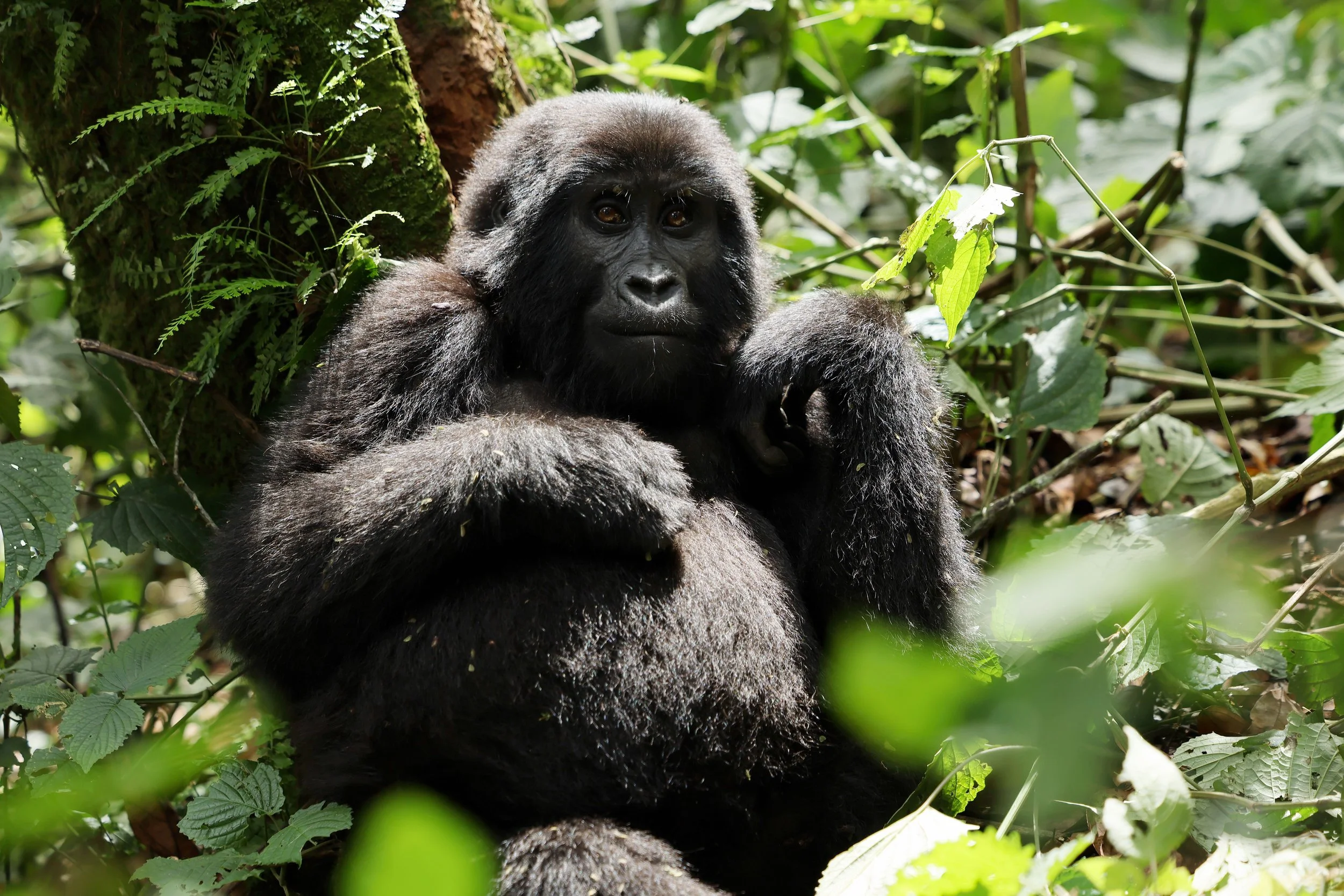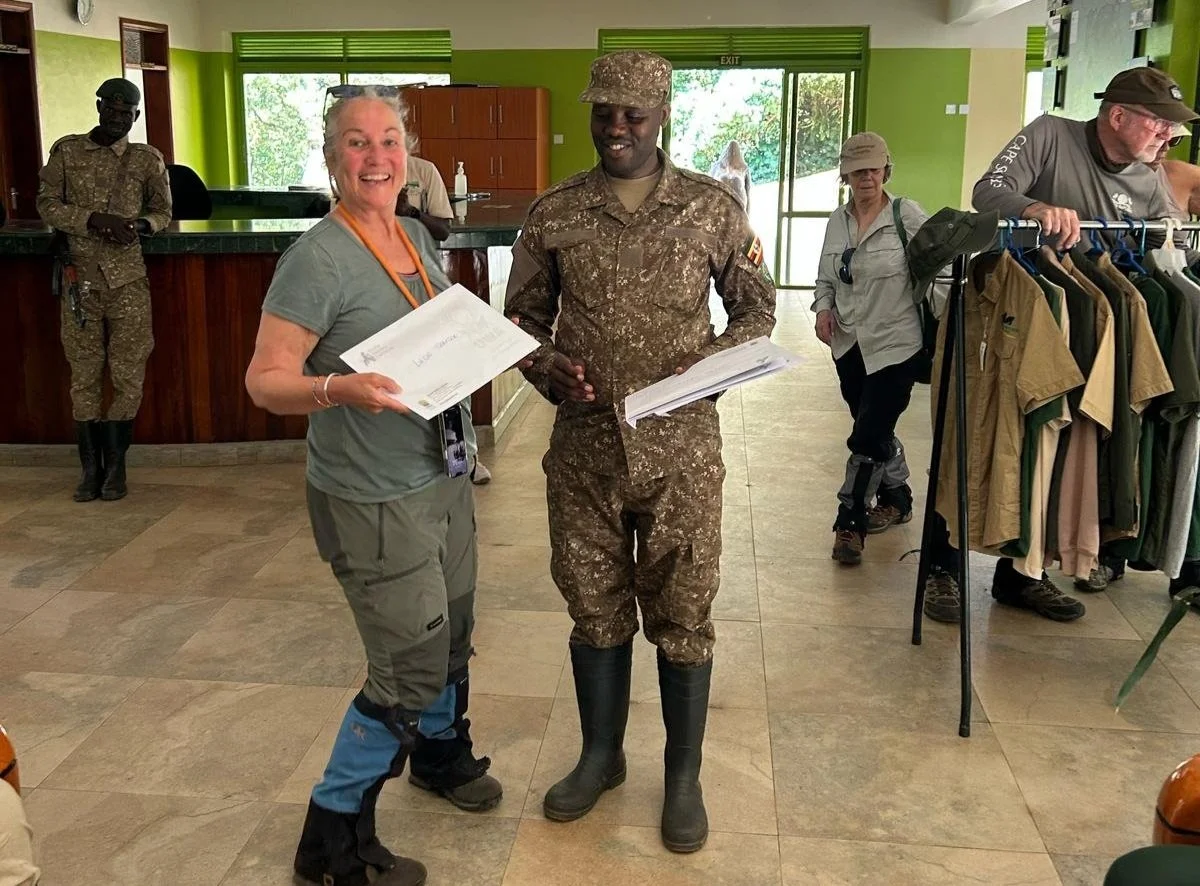Gorilla Trekking in Uganda: My Guide to Meeting Mountain Gorillas (and what they don’t tell you…)
I’ve just returned from my first trip to Uganda where I was privileged to experience gorilla trekking - one of Africa's most ‘bucket list’ wildlife experiences – and I was lucky to enjoy a face-to-face encounter with an endangered mountain gorilla family in their amazing rainforest home.
Here I’ll share everything you need to know about planning your gorilla safari in Uganda. My complete guide covers the best time to visit, gorilla trekking permits, what to pack, and tips to make your Uganda gorilla experience truly unforgettable. I’m also giving the nitty-gritty that other safari operators don’t!!
A mountain gorilla in Bwindi Impenetrable National Park
Why Choose Uganda for Gorilla Trekking?
Uganda is home to nearly half of the world's remaining mountain gorilla population, in two protected national parks: Bwindi Impenetrable National Park and, further South the less visited Mgahinga Gorilla National Park. While Rwanda and the Democratic Republic of Congo also offer gorilla trekking experiences, Uganda presents several compelling advantages.
First and foremost, Uganda gorilla permits (currently $800) are significantly less expensive than Rwanda's ($1,500), making the experience much more accessible. Best of all, you'll also be able to combine your gorilla trek with classic safari adventures in Queen Elizabeth National Park or chimpanzee tracking in Kibale, creating a more diverse wildlife holiday.
The country offers varied trekking options with over 25 habituated gorilla families across four different sectors of Bwindi Impenetrable Forest. This means you can choose the region that best matches your fitness level and preferences. You can also choose to take part in the Habituation Experience where you spend up to 4 hours with a family versus the usual hour.
During your visit to Bwindi, you'll have opportunities for interactions with local Batwa and Bakiga communities, adding a cultural dimension to your adventure. These communities were displaced when Bwindi National Park was gazetted and Trekking porters (essential believe me) are drawn from these communities.
Perhaps most appealing to many travellers is that Uganda's multiple gorilla families are spread across various regions, resulting in fewer visitors than you might encounter elsewhere.
When Is the Best Time for Gorilla Trekking in Uganda?
While gorilla trekking in Uganda is available year-round, the best months to visit are during the dry seasons. From December to February, you'll enjoy sunny days with minimal rainfall, making forest trails more manageable. The same applies to June through August, which offers another dry period with excellent trekking conditions.
These periods make your Uganda gorilla safari more comfortable in several ways. You'll have easier hiking conditions on drier forest paths, especially when navigating the steep terrain. Photographers will benefit from clearer light for capturing those once-in-a-lifetime gorilla moments. There's also a reduced risk of heavy downpours interrupting your gorilla encounter.
That said, the wet seasons from March to May and September to November offer their own special charm – lush, vibrant forests, noticeably fewer tourists, and often more attractive accommodation rates. Many consider April, May and November the sweet spots for budget-conscious adventurers seeking a more exclusive experience without the crowds.
Uganda's Mountain Gorilla Trekking Locations
Bwindi Impenetrable National Park
This ancient, mist-shrouded forest is Uganda's premier gorilla trekking destination, home to approximately 459 mountain gorillas – nearly half the global population. Bwindi offers four distinct trekking regions:
Buhoma Sector (Northern): The most established region with excellent accommodation options and moderate trekking difficulty and where I had my gorilla encounter with the Rushegura gorilla family.
Ruhija Sector (Eastern): Higher elevation with stunning views and sometimes more challenging treks.
Rushaga Sector (Southern): Home to the largest number of habituated gorilla families, and the location for the gorilla habituation experience.
Nkuringo Sector (Southwestern): Offers more strenuous treks with breathtaking scenery and fewer tourists.
For first-time visitors, Buhoma offers the most developed infrastructure, while adventure seekers might prefer the more remote Nkuringo or Rushaga sectors.
The views from the trailhead at Buhoma are spectacular
Mgahinga Gorilla National Park
Nestled against the Virunga Mountains at the intersection of Uganda, Rwanda and Congo, Mgahinga is Uganda's smallest national park. Currently home to one habituated gorilla family, Mgahinga offers the unique chance to combine gorilla trekking with golden monkey tracking in a single visit.
Its convenient border location also makes it perfect for travellers wishing to visit multiple countries during their East African journey.
Securing Your Uganda Gorilla Trekking Permit
The Uganda Wildlife Authority strictly limits gorilla visitation to protect these endangered primates. Only eight visitors are permitted per gorilla family each day, making advance booking essential. Current permit costs are $800 per person, with potential increases anticipated as conservation needs evolve.
To secure your permit:
Book 6-12 months in advance: Especially important during peak seasons (June-August, December-February)
Use a reputable tour operator: They can handle the permit process and build a comprehensive itinerary
Consider flexible dates: Improves your chances of securing permits during your travel window
Verify age requirements: Trekkers must be at least 15 years old
Check health requirements: You must be fit enough for potentially strenuous hiking at altitude
For budget-conscious travellers, Uganda occasionally offers discounted permits during low seasons (typically April, May and November), sometimes reducing prices by up to 30%.
The slopes of Bwindi are steep and the vegetation is dense, but I found a gap for this picture
What to Expect on Your Gorilla Trek
Before the Trek
Your gorilla trekking adventure begins early, typically with:
Morning briefing (8:00 AM): Park rangers introduce the experience, safety rules, and gorilla families
Group assignment: You'll be allocated to a specific gorilla family based on your fitness level and preferences
Porter hiring: Local porters are available (and recommended both for assistance and supporting the local economy). A porter carries your bag, and gives you a helpful shove or hand up on steep sections of the trail.
Final preparations: Last chance for facilities and equipment checks, after which you’ll either walk or drive to the trailhead and start your hike.
The Trek Itself
The journey to find your assigned gorilla family varies dramatically from group to group and day to day. Some lucky trekkers might reach their gorillas in as little as 30 minutes (my family took 45 mins to get to), while others embark on more challenging adventures lasting 6+ hours of hiking. The terrain is steep and covered in dense undergrowth, requiring good footwear and a reasonable level of fitness. Throughout your trek, rangers maintain communication with advance teams who set out early each morning to locate the gorillas based on where they nested the previous night. Your guides will set an appropriate pace for your group with frequent breaks as needed, ensuring everyone can keep up.
Once the gorillas are finally located, there's a flurry of quiet preparation. Your porters retreat with your walking sticks (as these can be perceived as threatening by the gorillas) and you will ready your camera equipment. Your guide will lead you to approach the family quietly, providing final instructions in hushed tones. Then begins your strictly-timed one-hour encounter – a period carefully limited to minimise impact on these endangered creatures while providing visitors with an unforgettable experience.
The Gorilla Encounter
Your precious hour with the gorillas gives you a window into their remarkable social world. You'll find yourself observing fascinating family dynamics and natural behaviours that reveal their complex social structure.
Throughout your encounter, guides ensure you wear your face mask and maintain the required 7-meter distance to protect both visitors and gorillas from potential disease transmission, though occasionally curious gorillas themselves choose to approach closer – a heart-stopping moment when it happens.
Receiving my trekking certificate at HQ after my trek. Phew!
Essential Packing for Your Uganda Gorilla Safari
You'll want to start with sturdy, waterproof hiking boots that provide good ankle support for navigating the muddy, uneven terrain. I followed the recommendation to bring gardening gloves to protect my hands when grabbing onto thorny vegetation for balance during steep sections, and I’m very glad that I did.
A quality lightweight rain jacket is essential, even if you're visiting during the dry seasons, as forest downpours can occur with little warning. Wear long trousers and long-sleeved shirts in ‘safari’ colours for protection against fierce nettles and insects.
The lodge I stayed at provided gaiters which were really good protection against thick & thorny vegetation, or you could tuck your trousers into your socks to prevent ants and other insects from climbing up your legs. If there is a gap they WILL find it! A wide-brimmed hat and sunscreen will protect you from the sun in forest clearings, while a good insect repellent (preferably containing DEET or (my preference) PMD) will keep the bugs at bay.
You'll need sufficient water and energy-rich snacks to sustain you during what could potentially be a long hike. For photographers, waterproof bags, extra batteries, and a mid-range zoom lens (70-200mm is ideal, preferably f/2.8) will help you capture incredible memories without disturbing the gorillas. I hired a lens to help me capture images in low light, but found that my iPhone was also good, and that videos are easier to capture than stills.
Don't forget to pack a small first aid kit including any personal medications you might need (I recommend antihistamine!), and bring cash for tipping your guides, porters and lodge staff – either Ugandan shillings or US dollars are accepted, though local currency is always appreciated.
Beyond Gorillas: Extending Your Uganda Safari
While gorilla trekking is undoubtedly the highlight of any Uganda visit, the country offers remarkable diversity for extended wildlife adventures. Consider spending a few days in Queen Elizabeth National Park, where you can enjoy classic savannah safaris and perhaps spot the famous tree-climbing lions lounging in fig trees.
North of Queen Elizabeth lies Kibale Forest, home to over 1,500 chimpanzees and 12 other primate species. A chimpanzee tracking experience here makes a perfect complement to your gorilla encounter. For something truly spectacular, venture to Murchison Falls, where the Nile squeezes through a narrow gorge before plunging 43 metres. The park also has abundant wildlife including elephants, giraffes and hippos.
Adventure enthusiasts will enjoy a few days in Jinja, often called East Africa's adventure capital, situated at the source of the Nile. Here you can try white-water rafting, kayaking or bungee jumping.
Responsible Gorilla Tourism: Making a Difference
Your gorilla trek directly supports conservation efforts:
Permit fees fund anti-poaching patrols, community projects, and habitat protection
Tourism creates sustainable employment alternatives to forest exploitation
Community revenue sharing builds local support for conservation
Your visit raises global awareness about mountain gorilla conservation
After hiring a very good lens some of my images were passable!
What the other operators don’t tell you about Gorilla trekking!
I’m going to tell it to you straight – gorilla trekking is NOT a walk in the park, and its rich rewards come with challenges…
Gorillas live on very steep terrain which is covered in very dense vegetation, most of which is face high and has stings or thorns. You’ll spend a lot of your trek bashing through this in high temperatures. Your porter really is invaluable, helping you not to fall flat on your face, and boosting you up the steepest sections so definitely worth the $20 cost.
There are also biting ants which will find any gap in your clothes and torment you until you can shed your clothes and get under a shower.
You don’t need to be super fit (I did it!) but I wish I’d done more training for it, and possibly done a bit of ankle strengthening work as well. Don’t forget that everything is harder at altitude! In Bwindi the altitude ranges from 1,160m - 2,607m above sea level with about 60% of the park having an elevation of over 2,000 metres.
You’ll need to wear a face mask when you’re close to the gorillas and this is not pleasant when you’re sweaty. However it is essential to protect them from contracting our diseases, so if you’re uncomfortable wearing a face mask then just don’t go.
Photography is hard in these conditions. There isn’t much light and getting a clear view is tricky. There are other people in your trekking group, and at least one of them will be in your field of view most of the time. I stopped taking pictures after a while and just relaxed and enjoyed the incredible experience.
Final Tips for an Unforgettable Uganda Gorilla Trekking Experience
Make sure to get enough rest during your journey, as the combination of early starts and high-altitude environments can be tiring.
Staying properly hydrated is essential in the humid forest environment, so carry plenty of water. When you finally meet the gorillas, remember to occasionally put your camera down and simply enjoy the moment, some of the most profound memories will be those experienced fully, not viewed through a lens.
Take time to respect cultural differences and engage meaningfully with local communities during your visit. Part of what makes Uganda special is its people, not just its wildlife.
If your budget allows, consider booking a second trek, perhaps in a different sector of the forest, or the habituation experience where you spend up to four hours with a group. Many visitors find that their second encounter with gorillas is even more rewarding than the first, as they know what to expect and can focus more fully on the experience. Finally, manage your expectations by remembering that wildlife encounters are unpredictable; each gorilla family behaves differently, and this unpredictability is part of what makes the experience so authentic and special.
Is Uganda Gorilla Trekking Right for You?
If you're passionate about wildlife, seeking authentic experiences, and willing to invest in conservation, gorilla trekking in Uganda will likely rank among your most treasured travel memories.
The combination of breathtaking landscapes, extraordinary wildlife encounters, and meaningful conservation impact makes an Uganda gorilla safari a truly exceptional experience. Whether you're celebrating a special occasion, fulfilling a bucket-list dream, or just love our natural world, meeting mountain gorillas in their dramatic forest home offers an unforgettable experience.





